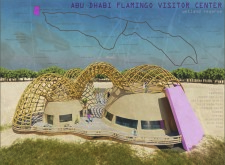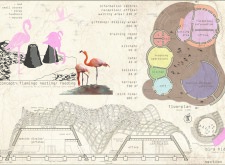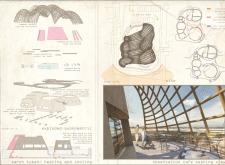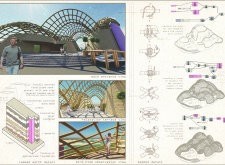5 key facts about this project
The Abu Dhabi Flamingo Visitor Center is located in a rich wetland area, designed for education and conservation. It encourages visitors to connect with local wildlife, particularly various bird species. The design focuses on sustainability and ecological awareness, creating open spaces that allow for interaction with nature. Visitors can immerse themselves in the region’s diverse ecosystem while enjoying the facility’s thoughtful layout.
Architectural Layout
The visitor center features an organized layout with self-guided trails of 1.5 km and 3 km. These trails encourage guests to explore the surrounding landscape at their own pace. Pathways lead to a bird hide, which offers unobtrusive views of native species like the Greater Flamingo, Lesser Flamingo, and Sociable Lapwing. This structure promotes education and fosters a connection to the environment.
Facility Design
The center includes an information hub that features a reception area, office, and waiting space. It also has a training room, kitchen, gift shop, and café. An accessible ramp runs throughout the facility, ensuring that all visitors can navigate with ease. This design enhances inclusivity and adds to the overall user-friendly experience.
Sustainability Practices
Sustainability is integral to the design, reflected in material choices and environmental strategies. Rammed earth is a key material, providing thermal mass that helps with temperature regulation. This reduces the need for mechanical heating and cooling systems. Additionally, bamboo is used in the canopy structure, supporting the aesthetic and ecological goals of the center.
Environmental Integration
The design employs earth tubes that contribute to passive heating and cooling. This approach optimizes energy efficiency and maintains a comfortable atmosphere for visitors. The structure complements the natural landscape, allowing for a connection to the environment through abundant views and natural light.
Large windows frame the wetland outside, drawing visitors’ attention to the vibrant surroundings. This design choice encourages appreciation and understanding of local wildlife, fostering a sense of respect for the environment.






















































